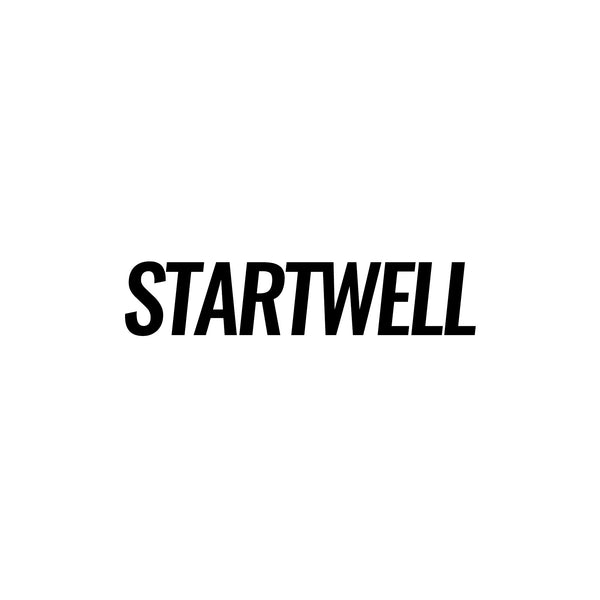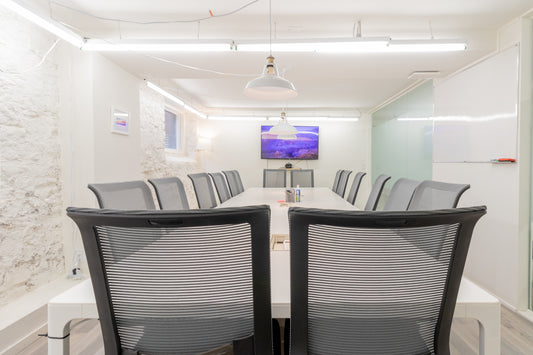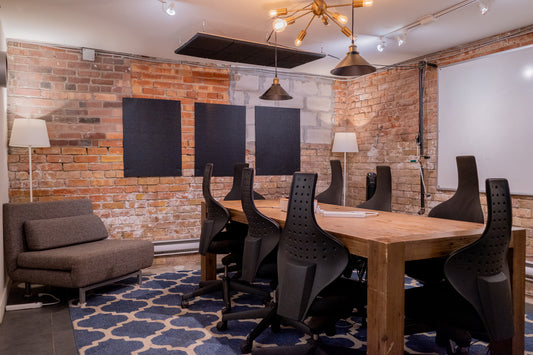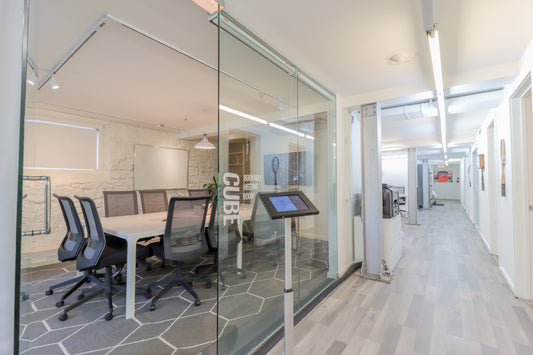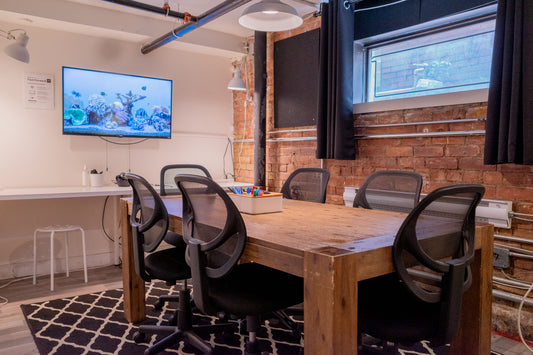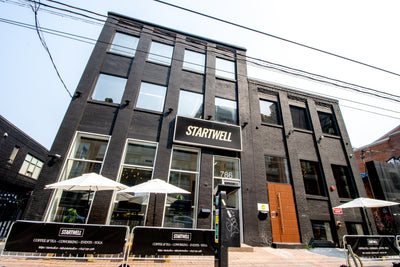In this short video we sit down with Douglas Soltys the Founder and Editor-in-Chief of BetaKit, who work with StartWell in downtown Toronto to host streamed and in-person events, meetings and filmed podcasts relating stories from Canada's innovation ecosystem.
BetaKit is the publication of record for Canadian startup and tech innovation news, providing trusted and accessible business journalism. Their journalistic team and its coverage spans the country, offering breaking news and in-depth reporting across a variety of formats.
Transcript
BetaKit is Canada's publication of record for all things tech, startup, innovation. BetaKit's actually been around since 2012, so over 10 years now, starting initially as a Canadian-based publication focused on global tech events and then pivoting in 2013 to Canadian-based Canadian-focused.
We always wanna make sure that we're locked in on early stage founders and up. We kinda wanna get them as early in the ecosystem as possible, but then in covering that, it leads to investors, C-suite execs, people tracking the ecosystem more broadly, but I think you have to have a core audience that you support every day, and then if you do that well, it brings in a broader collective.
So we go all the way up to the C-suite and beyond and people tracking the industry from beyond Canada, but it only happens because day to day we're providing coverage of early stage founders, what's going on at the grassroots level.
The kinda standard conversation around startups and innovation in Canada is always one of relation to the United States by way of comparison, size, scale, focus, those macroeconomic kind of global events, how they impact Canada.
I think there is a greater leaning here towards government funding and support, even just a greater social connection to working with, to the government to drive innovation forward, extending even to universities across Canada, those being innovation centers, how that work gets commercialized, but really the big conversation is how do Canadian founders compare to the best startups in the world and predominantly in the US.
At the end of the day, people need to know where the deals and dollars are going, the day to day events of funding, acquisitions, things like that. It's very important for us as a publication of record to kinda document the activity.
Beyond that, I think they're coming to us for the context, why it matters, how it connects to the historical.
As someone who's been in this space for 20 years now and been reporting on startups specifically for about 10, understanding the macroeconomic events that are happening in 2023 and how they might relate to the dot com crash or 2008 is really important to set context and perspective and not be too dramatic, but not also be too underwhelmed by the day to day news. So it starts with making sure people know what's going on in a daily and a weekly level and it expands to the context of why that matters, why it's important and who it's impacting. So I have been podcasting since at least 2008. I don't know how many podcast episodes I've done because most of those podcasts are dead and gone now.
The BetaKit podcast has been around for just under 300 episodes. We're gonna do our 300th episode this year, which is a lot. It has taken on a bunch of different forms. We did a pandemic special series focused on the Black Swan event and how it was impacting startups and we've evolved it from being purely audio, locally recorded to then audio remote recorded to now in-person again, expanding the video, experimenting with new formats, doing in-person events, live events with people, in some ways it kind of tracks the journey of BetaKit from being, hey, let's record this really fun conversation we're having to, how can we connect with the ecosystem across Canada? How can we bring them into the conversation? What are new formats? What they prefer to engage with that content with?
Podcasts at their best are conversations and conversations can be enjoyed when you're walking around downtown with your headphones in or they can be enjoyed sitting and watching people on stage or they can be something that you're watching because there's a dynamism to two or three people in a room really connecting with each other.
So we're kind of looking to expand across all of those formats and it's been interesting to see immediately what works in audio that might be not right for video or cool things that we can do with video that we would have never tried before because we didn't have that option.
Sometimes for me, it's tone. Really understanding when you can see two people in a room having a conversation, you get a much stronger sense of who's enjoying that conversation, how engaged they are, that whether they're being fully serious or there's something else going on under the scene, like subtext is really important and that can really enrich your conversation.
With audio sometimes you have to be a little bit more explicit, but I think there are so many opportunities in terms of cutting new elements together, adding different visual components that aid the viewer to kind of understand what's going on.
It doesn't just have to be the spoken word, you're really going three-dimensional with it and that requires a lot of thought into how to use that effectively, but when you are using it effectively, it adds a whole other element to it.
We did our first video podcast with a famous Canadian YouTuber, Dan Olson, Folding Ideas and we're like, "Well, we gotta have video ready for this."
And the opening to that interview starts differently than every other podcast episode we've done before because we were able to take a snippet of that interview, add B-roll to it, expand beyond that, set a tone for it, and that's just something that we could've done with audio. It was kind of a light bulb moment for us.
I think working with StartWell and what we're doing in the studio here has allowed just a visual element where it almost brings you in before anyone said anything because there's an intimacy there, there's a focus there.
Again, there's that tone and context that's being applied and I'm really excited about using this to bring the podcast to new audiences. People who are, you know, maybe they don't watch TV anymore, they're not on the radio, they're not listening to podcasts, YouTube, social cuts, that's their engagement. That's how they process new information and we can produce things for them to kind of bring them in to the more broader conversation.
I'm also really hyped to get in front of people on stage. Live events is a big thing. It's really scary. You don't know if anyone's gonna show up and then the first time you do it, everyone shows up, they have a great time. You're like, we need to be doing this all the time. So I, and I think that that doesn't really convey an audio the way it does with video because you need to see the people in the room, you need to get a sense for the energy and what's going on.
I think it's very easy to do this type of content poorly and to do it well requires people who have that perspective, that understanding of like tone and context but also care to make it good. It's very easy to pass off poor video, poor events as meeting the minimum standard but everyone can tell when that extra care has been put in and I think that leads to a whole bunch of opportunities.
If you can connect the in-person experience to a rich video experience, if you can connect the conversation with the visuals, you can reach new people but you can also connect them to others who are coming for different reasons.
So is it hybrid? Is it taking that storytelling format and right sizing it to each channel, getting what it needs? We're gonna find out, but it's really important to work with people who understand that side of things.
And for us, not coming from that place, respecting the work that goes in, having like a turnkey solution, that's the game changer because you're not thinking about the production considerations. You're thinking about how you can use the production talents to achieve the conversations and storytelling that previously were just sitting in your head.
So when we're in the podcast studio, it's a very intimate set. It's perfect for featuring the conversation.
If you wanna do something that's a little bit bigger, broader, they have other spaces where we can bring in an audience. There are places just for networking and entertainment.
Like I think having a portfolio of spaces that each fit a different use case and then being able to turn those on and activate with each other is much better than the kind of old industry model of here's our big box - "How do we fill it with as many people as possible?"
